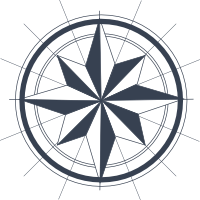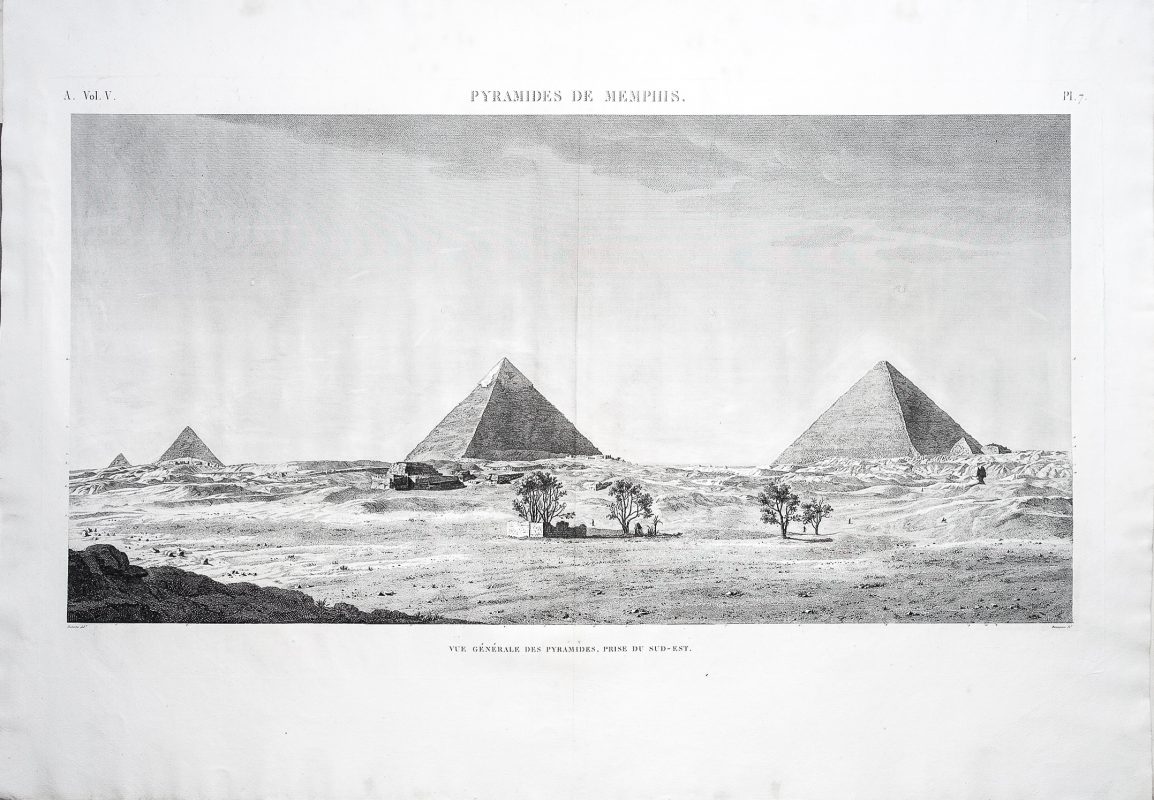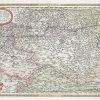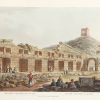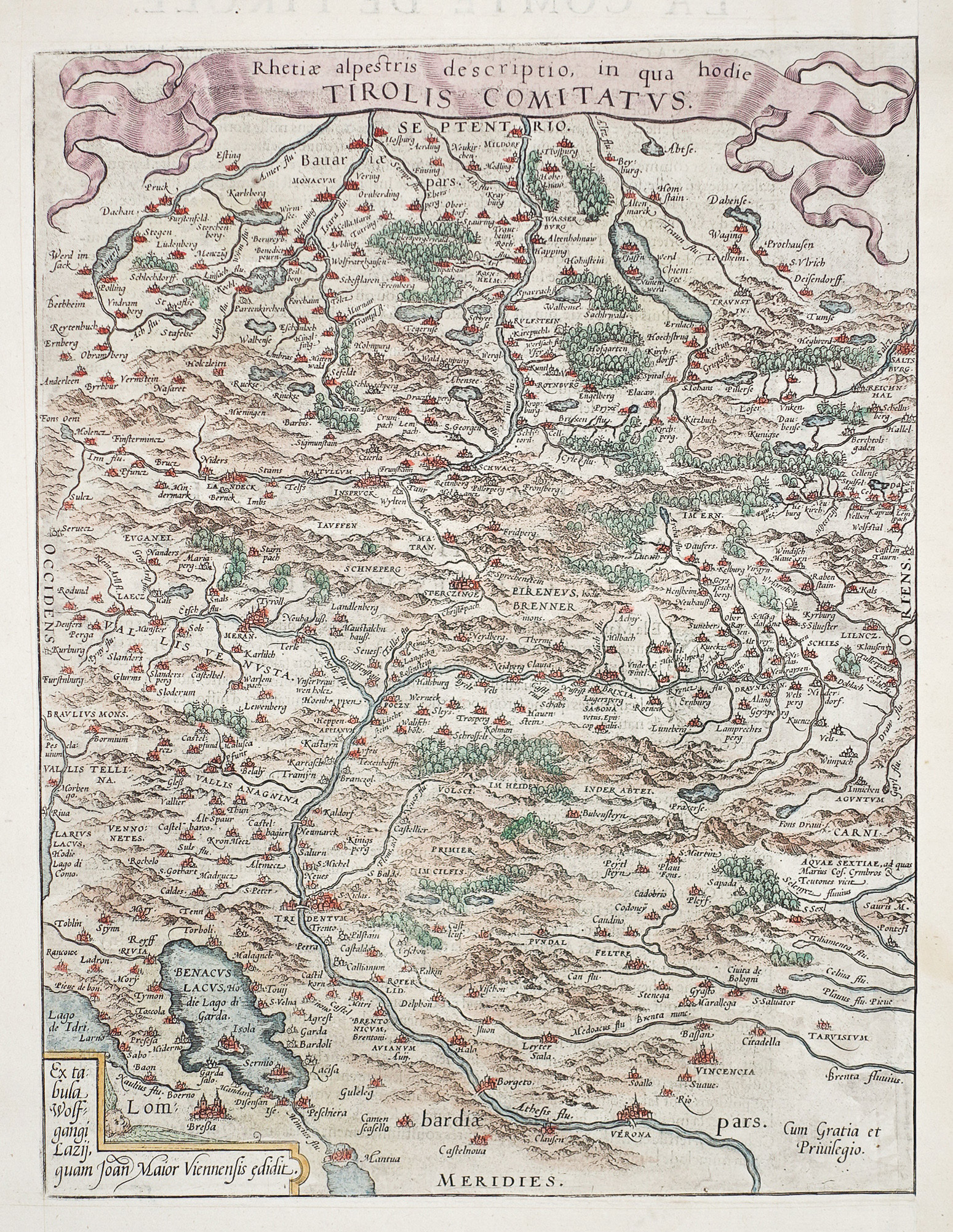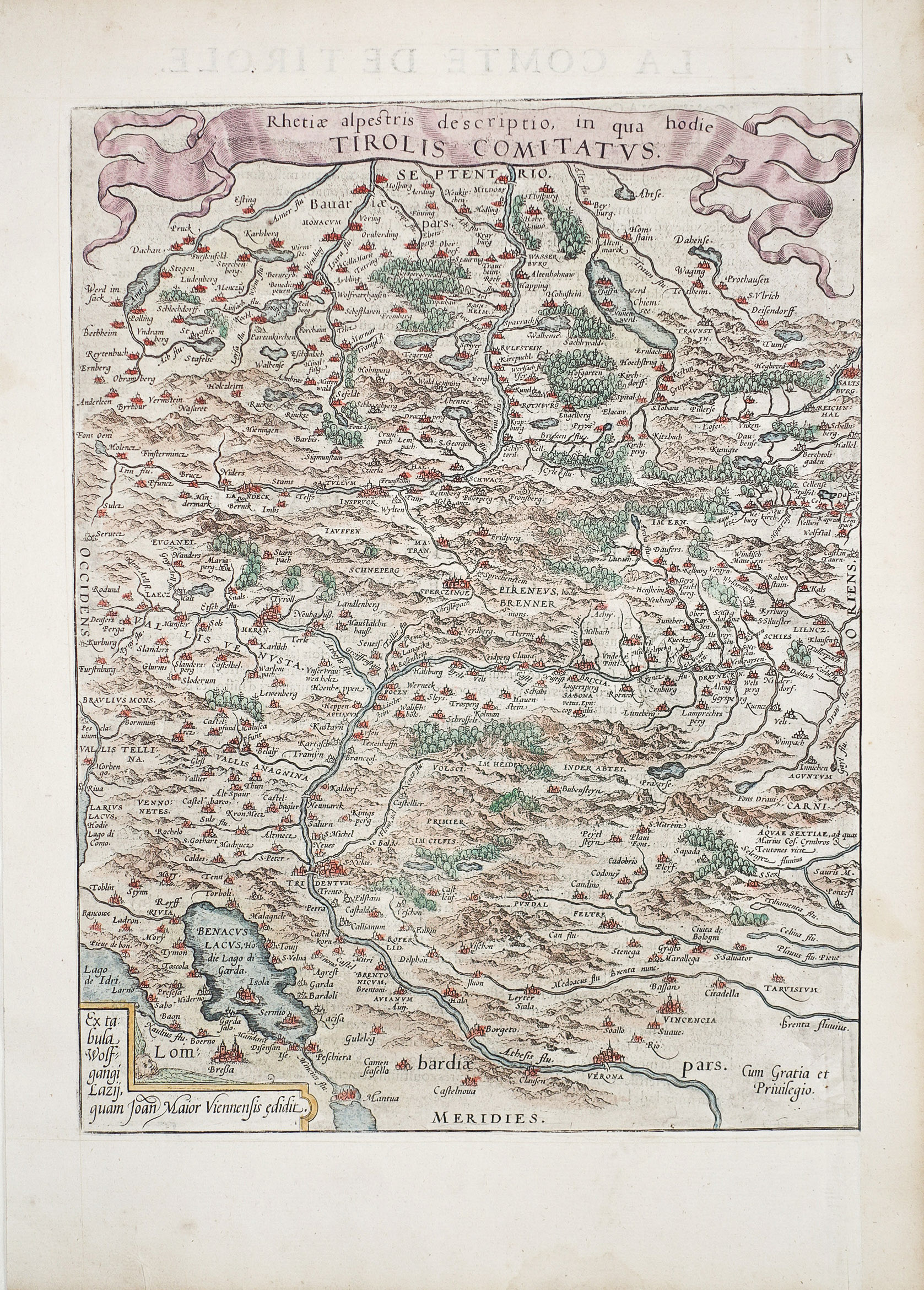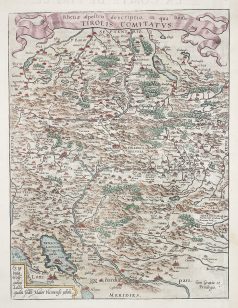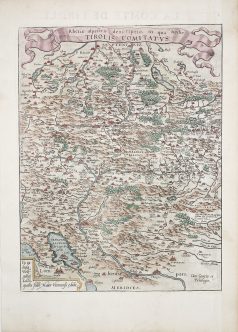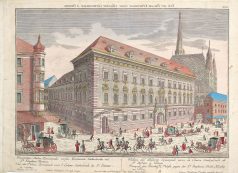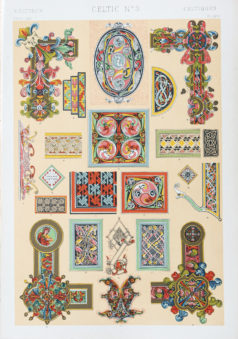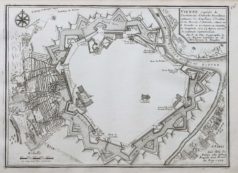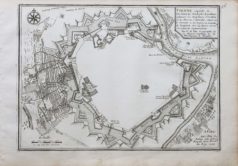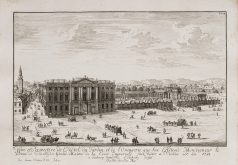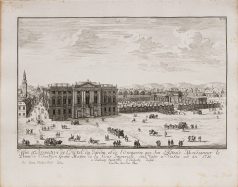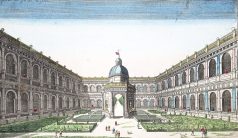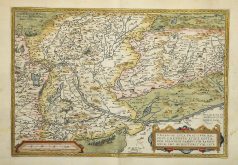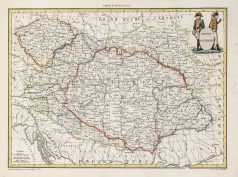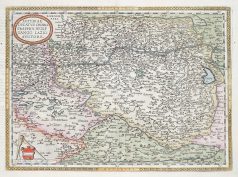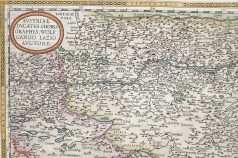Carte ancienne de Tyrol – Lac de Garde
320 €
Epreuve originale réalisée en 1581. Abraham Ortelius cartographe.
Belle impression. Coloris aquarelle.
Explication de la carte en français au verso.
Format feuille : 43,5 x 30 cm.
Format cuivre : 34,5 x 26 cm.
Très bon état.
Original antique map of 1581.
Carte illustrant les Alpes Italiennes et Autrichiennes de Innbruck au Nord jusqu’à la ville de Vérone et Mantoue.
Rare édition de 1581 avec un commentaire en vieux français au dos de la carte.
1 en stock
DEMANDE D'INFORMATION
Abraham Ortel, mieux connu sous le nom d’Ortelius, est né à Anvers et, après avoir étudié le grec, le latin et les mathématiques, s’y est établi avec sa sœur, en tant que libraire et «peintre de cartes». Voyageant beaucoup, particulièrement aux grandes foires du livre, son entreprise prospéra et il noua des contacts avec des lettrés dans de nombreux pays.
Un tournant dans sa carrière est atteint en 1564 avec la publication d’une carte du monde en huit feuilles dont un seul exemplaire est connu : d’autres cartes individuelles suivront, puis, à la suggestion d’un ami, il rassemble une collection de cartes qu’ il fit graver dans une taille uniforme, formant ainsi un ensemble de cartes qui fut publié pour la première fois en 1570 sous le nom de Theatrum Orbis Terrarum (Atlas du monde entier).
Bien que Lafreri et d’autres cartographes italiens aient publié des collections de cartes «modernes» sous forme de livre au cours des années précédentes, le Theatrum a été la première collection systématique de cartes de taille uniforme et peut donc être appelé le premier atlas, bien que ce terme n’ait été utilisé vingt ans plus tard par Mercator.
Le Theatrum, avec la plupart de ses cartes élégamment gravées par Frans Hogenberg, connaît un succès immédiat et apparaît dans de nombreuses éditions dans différentes langues, y compris des addenda publiés de temps à autre incorporant les dernières connaissances et découvertes contemporaines. La dernière édition de cartes parut en 1612.
Contrairement à bon nombre de ses contemporains, Ortelius nota ses sources d’informations. Dans la première édition, quatre-vingt-sept cartographes étaient remerciés.
Outre les cartes modernes de son atlas principal, Ortelius a lui-même compilé une série de cartes historiques connues sous le nom de Parergon Theatri, qui sont apparues à partir de 1579, parfois sous forme de publication distincte et parfois incorporées au Theatrum.
Abraham Ortel, better known as Ortelius, was born in Antwerp and, after studying Greek, Latin and mathematics, settled there with his sister as a bookseller and « card painter ».
Traveling a lot, especially at major book fairs, his business flourished and he made contact with scholars in many countries.
A turning point in his career was reached in 1564 with the publication of a map of the world in eight sheets of which only one copy is known: other individual cards will follow, then, at the suggestion of a friend, he gathers a collection of He engraved the cards in a uniform size, forming a set of cards that was first published in 1570 as the Theatrum Orbis Terrarum (Atlas of the World).
Although Lafreri and other Italian cartographers have published collections of « modern » cards in book form in previous years, the Theatrum was the first systematic collection of uniformly sized cards and can therefore be called the first atlas, although this term was used twenty years later by Mercator.
The Theatrum, with most of his cards elegantly engraved by Frans Hogenberg, is an immediate success and appears in many editions in different languages, including addenda published from time to time incorporating the latest knowledge and contemporary discoveries.
The last edition of cards appeared in 1612.Unlike many of his contemporaries, Ortelius noted his sources of information. In the first edition, eighty-seven cartographers were thanked.In addition to the modern maps of his main atlas, Ortelius himself compiled a series of historical maps known as Parergon Theatri, which appeared from 1579, sometimes as a separate publication and sometimes incorporated into the Theatrum.
Produits similaires
Epreuve originale éditée vers 1760. Vue d’optique. Beaux coloris anciens. Contrecollée anciennement sur grand papier. Marges latérales rapportées. Bon état. Format feuille : 43 x 32 cm Format gravure : 45 x 31,5 cm Original antique engraving of 1760.
Allemagne
Lithographie originale de 1865. Belle réalisation en chromolithographie. Très bon état. Format feuille : 33 x 23 cm. Original antique lithography of 1865. Remarquable impression en couleurs réalisée par les ateliers Firmin Didot. Les lithographes pouvaient utiliser jusqu’à 19 pierres lithographiques de couleurs différentes pour une même épreuve.
Autriche
Epreuve originale réalisée en 1705. Nicolas De Fer cartographe. Fines traces d’encre sur le bord de la marge latérale droite. Rousseurs claires n’atteignant pas l’épreuve. Bon état. Format feuille : 40 x 28 cm. Original antique map of 1705. Capitale de l’Archiduché d’Autriche, résidence ordinaire des empereurs d’Occident de la maison d’Autriche, située sur la Danube.
Autriche
Epreuve originale réalisée en 1721. Fischer von Erlach & Johann Bernhard (1656 - 1723) auteurs. Belle épreuve bien contrastée. Légende en gothique et vieux français. Très bon état. Format feuille : 48 x 38 cm. Format gravure : 42,5 x 29,5 cm. Original antique engraving of 1721. Vue et perspective de l’hôtel et jardin et de l’Orangerie…
Autriche
Palais du Prince Eugénie. Epreuve originale réalisée vers 1750. Beaux coloris anciens. Légende manuscrite dans le haut de l’épreuve. Infime rousseur dans le ciel. Bon état. Format feuille : 38,5 x 22,5 cm.
Carte originale réalisée en 1581. A. Ortelius cartographe. Belle impression de cette rare carte en édition française, finement aquarellée. Très bon état. Format feuille : 61,5 x 43,5 cm. Format cuivre : 51 x 35,5 cm. Original antique map of 1581
Carte originale gravée en 1809. Coloris aquarelle. Très bon état. Format feuille : 35,5 x 26,5 cm Format gravure : 30 x 32 cm Original antique map of 1809.
Epreuve originale réalisée en 1581. Abraham Ortelius géographe. Belle impression. Coloris aquarelle. Explication de la carte en français au verso. Format feuille : 61,5 x 43,5 cm. Format cuivre : 50,5 x 37 cm. Très bon état. Original antique map of 1581. La première carte chorographique réalisée par Wolf Gango Lazio, illustrée d’un compas et d’une l’échelle des mesures.

